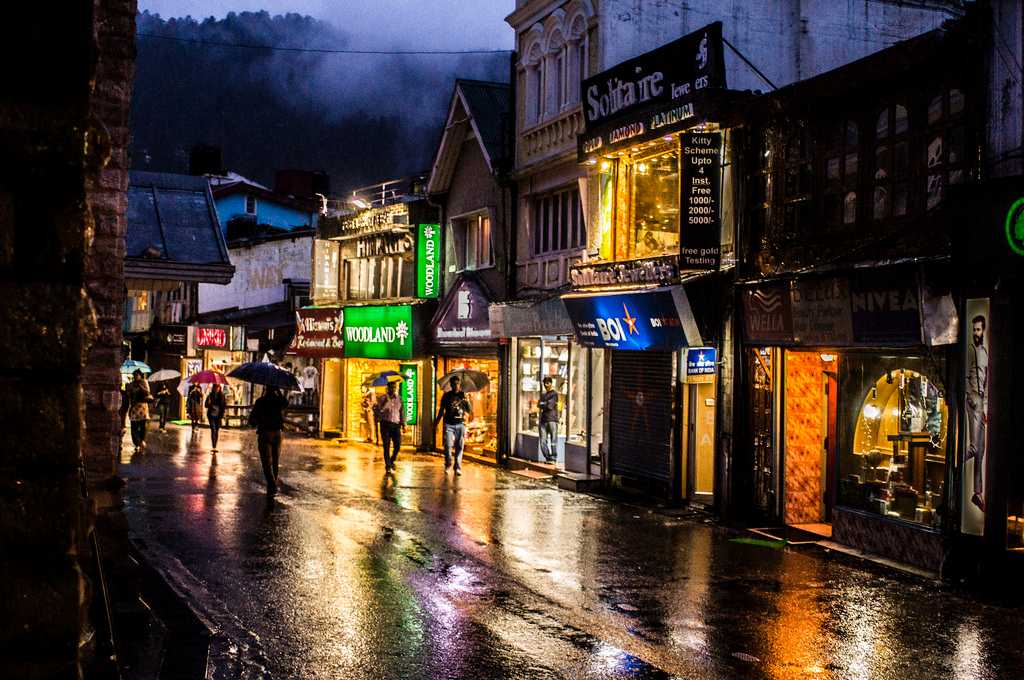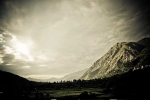Shimla Tourism
Hills Valleys, Rivers Lakes, Hill Stations, Honeymoon,
Ideal Duration : 2-4 days
Best Time : October to June
"The Hill-Station with Rich Colonial History"
Shimla Tourism
Probably the most popular hill station in northern India, Shimla is the capital city ofHimachalPradesh famous for its Mall road, theRidge, toy train etc. among honeymooners and families alike.
Situated at a height of 2200 m, Shimla is one of the most eminent tourist destination in the country. Set amidst beautiful hills and mystical woods, Shimla is one of most aesthetically planned cities in India. An erstwhile summer capital of British India, this town's captivating natural beauty, and the atmosphere are bound to leave any tourist overwhelmed. The well-knit roads, impeccable cleanliness, and an efficient administration make for a perfect combination for any tourist destination in the world. This town has colonial-style buildings alongside the historic temples and the amalgamation of the worlds leaves everyone visiting this region spellbound. Within this city, one must visit the Mall Road, The Ridge, Institute of Advanced Studies and Jakhu Temple. Shimla is also used as a base to cover other nearby places like Chail,Kufri,Naldehra,Mashobra,TattapaniandNarkanda. The toy train to Shimla from Kalka passes through beautiful hills and valleys and is one of the most beautiful train routes in the world.
Download Shimla PDF Guide >
What's Great?
The weather. It snows in winters and the landscape becomes all beautiful. One of the few hill stations to have an airport. One of the most developed hill stations.
What's not so Great?
The climate has started to become warmer with extreme colonization. The greenery has started to go away a little bit. One of the most congested hill stations.
For Whom
Perfect for people who want to have a short holiday and enjoy the weather as the winters approach. Extremely popular among students, couples, and adrenaline junkies. A stopping point to nearby hill stations.
History of Shimla
Back in the 18th century, Shimla was mostly all forest and trees. The only inhabitation was a temple and a few scattered huts. The establishment was called ?Shimla?, after a Hindu goddess, Shyamala Devi. The British took over the territory as per the Sugauli Treaty after Bhimsen Thapa of Nepal who ruled then.
In 1863, John Lawrence, the Viceroy of India, shifted the summer capital of British Raj to Shimla as a means to cope up with the Indian tropical heat. Later, Shimla became the capital of undivided Punjab in 1871. After the formation of Himachal Pradesh in 1971, Shimla became a part and was announced as the state capital.
The Religious Trail at Shimla
As it comes out, Shimla is the IT spot for all religious seekers; thanks to a number of temples and religious shrines here. The most famous of these happen to be the Jaakh temple, located on a hill dedicated to it, called the Jaakhu Hill. The temple is dedicated to Lord Hanuman and is characterized by a strong presence of monkeys in the vicinity of the temple. A little farther from the city of Shimla, right on the outskirts is the Tara Devi temple. Legend has it, that Goddess Tara Devi watches over the whole town and has a protective gaze, with the statement location of the temple on top of a hill. The location also gives out a feeling of serenity and peace.
Shimla also happens to have its own Kali Bari! With the Kali Bari being older than 150 years, this abode of Goddess Kali is a popular tourist attraction and a spiritual hub both for locals and travelers. Talking about Goddess Kali, there is another temple dedicated to the Goddess Kali in Shimla, called the Shoolini Temple, that is dedicated to Maa Shoolini, who is considered an incarnation of Goddess Kali. The last week of June of every year witnesses the Shoolini Utsav that lasts for a good 3 days and is the highlight of people's visit during this time of the year. However, the oldest temple in the city remains the Laxminarayan Temple. As the name suggests, the temple is dedicated to Maa Laxmi, the Goddess of wealth and is flocked by lakhs of people every year.
Heritage Walk in Shimla
Shimla is a vintage city and had been the British's favourite destination to spend the summer, all thanks to the chilled weather of this place back then, that attracted the British from the hot and humid places. And so, you can find a lot of British touch to everything here; from the buildings, to the overall construction of the city, to even the food. There is an old world charm attached to this place. The most popular heritage building here being the Viceregal Lodge, also known as the Rashtrapati Niwas was the residence of the Viceory of India, during the British rule; the last person to live here being the Mountbattens and huses the infamous Partition Table. The Shimla Heritage Museum is also an attraction for tourists looking for all historical insight into the city and the state of Himachal in general. The Heritage Walk will make you see the British architecture that had a strong Scottish influence, definitely visible at the Church on the Mall Road. Also, a walk through the ridge will make you see the beauty of the hills!
History of Shimla
Back in the 18th century, Shimla was mostly all forest and trees. The only inhabitation was a temple and a few scattered huts. The establishment was called ?Shimla?, after a Hindu goddess, Shyamala Devi. The British took over the territory as per the Sugauli Treaty after Bhimsen Thapa of Nepal who ruled then.
In 1863, the Viceroy of India, John Lawrence, shifted the summer capital of British Raj to Shimla as a means to cope up with the Indian tropical heat. Later, Shimla became the capital of undivided Punjab in 1871. After the formation of Himachal Pradesh in 1971, Shimla became a part and was announced as the state capital.
Itinerary
Day 1-Reach Shimla by noon and unwind a little in the hotel room. Head out to the Mall Road by walking to enjoy the crisp air in the evening. Soak in the aura of the place and dine at local restaurants on the Mall Road.Day 2-You should consider visiting the Jaakhu temple, without which your trip to Shimla is not justified. If it's the winters, you could take a cab for half an hour to Kufri and enjoy the snow there with your loved ones. A perfect activity for the whole day. Or you could visit the Viceregal Lodge and lose yourself in the way the British indulged. Call it a day at the Church on the Ridge.Day 3-Wake up early, take a hike to the nearest hilltop and watch the sunrise. Walk into any bakery at the Mall Road for a continental breakfast; the British way. Head on for some local shopping at the Mall Road and the Lakkar Bazaar (also visit the Chota Bazaar for cheap overcoats, jackets, and blazers), to get little trinkets and curios. Head to the hotel by evening and call it a day, early.
Oct-Junis the best time to visit Shimla
Shimla has amazing weather and tourists can go to Shimla anytime of the year. The summers in Shimla are extremely pleasant with the average temperature around 20 degrees. The peak tourist season in Shimla is from March to June, as this is the time that the snow has melted and the weather is enjoyable for those who have been trying to escape the harsh summers of the plains. After June, the monsoon season starts, which makes it slightly inconvenient to travel around the town. Post September, the weather starts becoming colder and it starts snowing occasionally by the mid of December till the end of February. This is the perfect place to go for trekking, paragliding and other adventure sports.
Weather in Shimla
Loading...
Shimla in Spring (March-June)
This is the best time to visit Shimla. The extreme winters have just passed away by this time and there is a little cool sun in the sky, which is not pinching and is quite enjoyable. A lot of North Indian crowd comes to Shimla during this season for a brief summer vacation.
Shimla in Autumn (August-November)
Autumn season or the Fall happens to be the best loved by travelers. The trees shed all the leaves and the complete environment has a monochromatic sheath to it. The days are pleasant and the nights are cool enough to cuddle in and sleep in woolen pajamas!
Shimla in Winter (November-January)
Winters are the best season for people who want to see snowfall in action. Somewhere around December, the snowfall starts and covers the entire city of Shimla in a white layer which is extremely beautiful to witness. Don't do anything. Just sit by the fireplace and enjoy the snow falling!
Monthly Weather in Shimla
Month
Avg. Minimum (°C)
Avg. Maximum (°C)
January
4
18
February
8
24
March
9
28
April
15
35
May
16
35
June
19
37
July
19
32
August
18
30
September
17
31
October
12
28
November
7
25
December
4
21
Events in Shimla
Skiing In Kufri, Winter Sports Festival
January - February
A picturesque hill station, Kufri has one of the oldest ski slopes in Himachal Pradesh. You can indulge in fun activities such as trekking, tobogganing etc. Try and visit
Annual Sipi Fair, Mashobra
1st May
Sipi fair, celebrated in a suburb Sipur, 2 km from Mashobra, is named after Seep deity. The main attraction is the visit of the deity from the nearby hamlet Deothi. During the festival, the place turns into a mystical setting and nobody spends the night here. The stalls are decorated and the venue hauls itself into an ad-hoc market to lure the visitors.
Shimla Summer Festival
1st - 5th June
One of the most awaited festivals, Shimla Summer Festival celebrates the coming of Summer, in the form of cultural attractions, folk performances, local handicraft exhibitions, as well as with quirky activities like fashion shows and dog shows.
Comments on Shimla
Post Your Comment


 Ridge
Ridge Mall Road
Mall Road Kufri
Kufri Toy Train to Kalka
Toy Train to Kalka Kasauli
Kasauli Manali
Manali Mcleodganj
Mcleodganj Narkanda
Narkanda Chail
Chail Kasol
Kasol